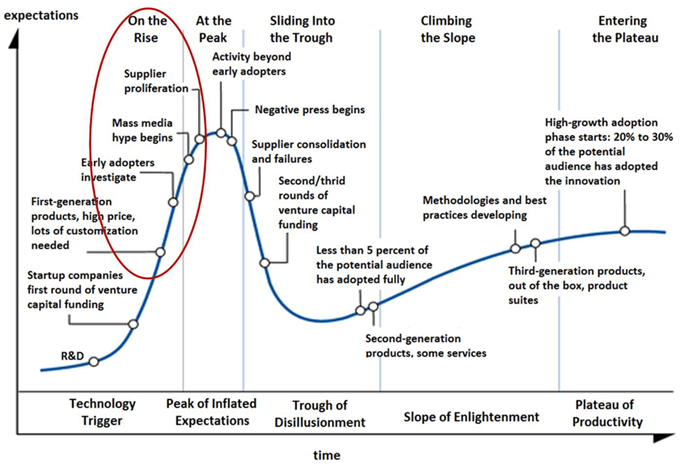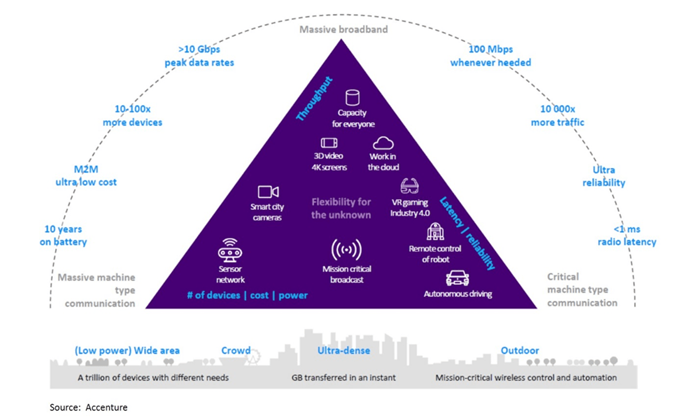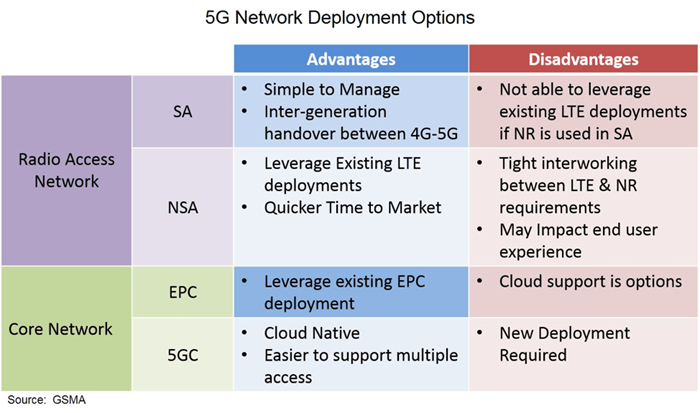“The future of 5G remains hazy but certainly promising.”
This might have been both the best and most concerning quote I heard at the 2019 IEEE Brooklyn 5G Summit – especially coming for the CTO of a Tier 1 US operator. In other words: We have this really cool technology that has a lot of potential. We think there are some really good use cases, but we aren’t exactly sure which ones will take priority beyond mobile broadband. However, we think it could be impactful to the industry, particularly the enterprise for industrial automation. Okay. Hazy for sure.
Two years after I wrote a blog post commenting on how the enthusiasm was overwhelmingly high for 5G and that the opportunities were endless and how much 5G was going to be a game changer not just to consumers, but to the entire industry – not much has really changed.
What has changed since 2017 is the fact that here in 2019 we are starting to see some early commercial deployments. Nonetheless, the industry remains in the “peak of inflated expectations” area of the hype cycle with respect to 5G, while beginning to crest the top on its way down into the trough of disillusionment.

5G feels like the kid whose parent tells them to clean their room and the kid keeps saying, “I’ll do it later.” Or the diet and exercise program I keep planning to do next week, then the week after, then next month. Well, you get the picture. It keeps getting pushed off.
Sure, there are a handful of live networks. Vendors get to issue press releases stating how many contracts they have signed. Operators get to tout being “first” and politicians get to say, “We are leading the race to 5G.”
But what does it all really mean?
If you are lucky enough to be in a market with 5G you might get a bit excited – until you realize that coverage is extremely limited. If you are able to find a 5G signal, you may experience significantly faster speeds than your 4G network – but still not the gigabit levels you were expecting. Additionally, you might have been expecting a range of cool new devices that would take advantage of the capabilities of 5G – only to realize that the number of devices is extremely limited and extremely expensive. And finally, with these faster speeds – you might soon realize that you are using up your data plan much more quickly than you were anticipating.
Promises … promises …
Perhaps what is most disappointing in the rush to get 5G “out-there” is the sacrifice the industry was willing to make regarding the key characteristics that defined 5G. Remember the 5G triangle? The three major usage scenarios defined for 5G included (1) enhanced mobile broadband (as in gigabit speeds); (2) ultra-reliable and low-latency communications; and (3) massive machine-type communications.

Here is the hard, cold truth … the only thing everyone is getting is the same thing we had before except faster: mobile broadband. Yes, the downlink speeds are faster, but the uplinks remain the same. Latency is improved, but not even close to the targets (1 to 4ms).
The majority of the features that “defined” 5G have all been relegated to later 3GPP releases. In fact, in a roundtable discussion regarding standards, it was noted that Release 15 was simply a “down-payment” towards 5G and that Release 16 is the first real installment (of at least two more) in what “real” 5G may look like.
So here we have the 5G conundrum.
A “true” 5G network that is able to deliver all of the characteristics of the triangle essentially requires a new network architecture. More than simply new radios and antenna systems, a “true” 5G network will be elastic, programmable and dynamically manageable, with NFV and SDN at its foundation and cloud native. It is safe to say that while progress is being made, it will be quite some time before we will get to this stage.
A “true” 5G network will require lots of spectrum across low (1GHz), mid (1 to 6GHz), and high (> 6GHz) bands. Availability and cost will play a key role in the 5G business case and, in many countries, spectrum availability is still to be defined.
Unfortunately, in an effort to be first to the market, most operators have chosen to take a step-wise approach to their network deployment that does not require all of the characteristics of “true” 5G. Referred to by 3GPP as NSA Option 3, these 5G networks will use the existing LTE radio and core network as an anchor for mobility management and coverage while adding a new 5G carrier. This offers support for legacy 4G devices and 5G devices only need to support New Radio protocols. The disadvantage is that this option does not introduce 5GC and therefore may not be optimized for new 5G use cases beyond mobile broadband.

So, was 5G rushed to market? One could make many arguments that the industry should have waited until it could address more features that would differentiate this network from 4G. On the other hand, others would argue that operators were looking for a marketing opportunity to offer new and higher-rate packages in an effort to boost stagnating revenues.
Regardless … the future of 5G remains hazy but certainly promising.
